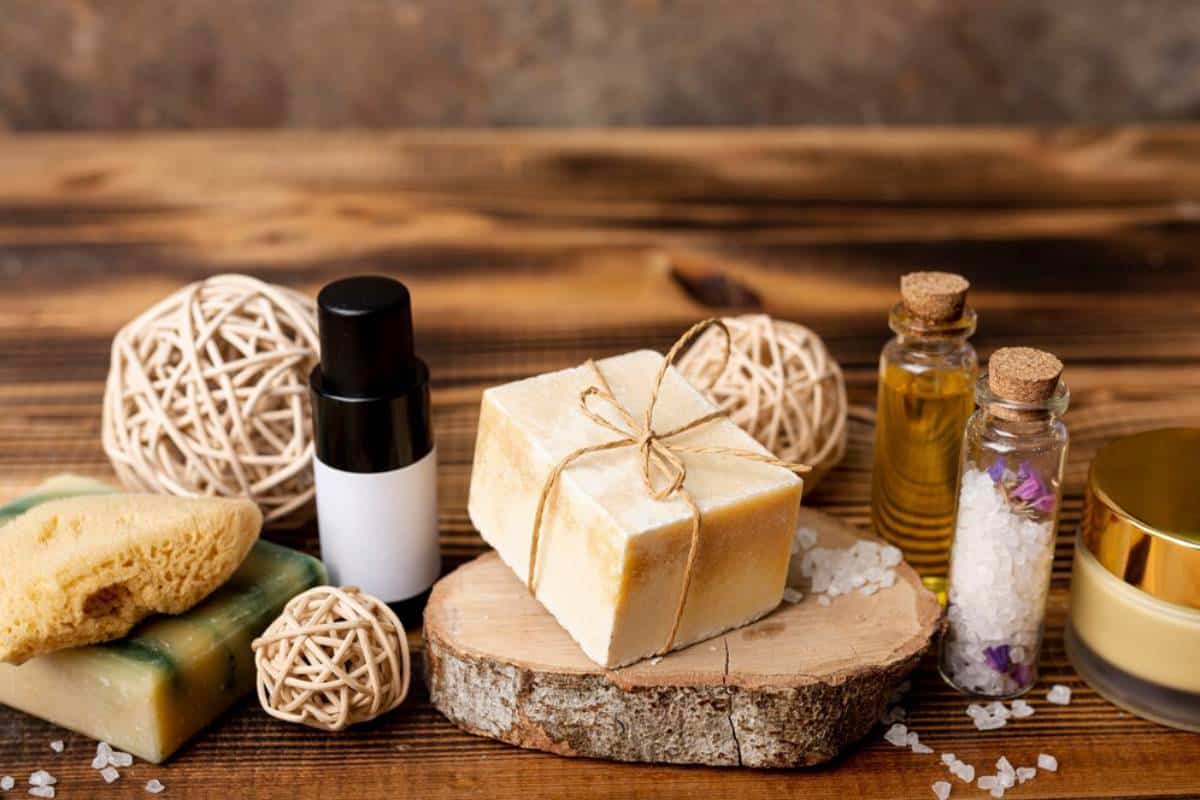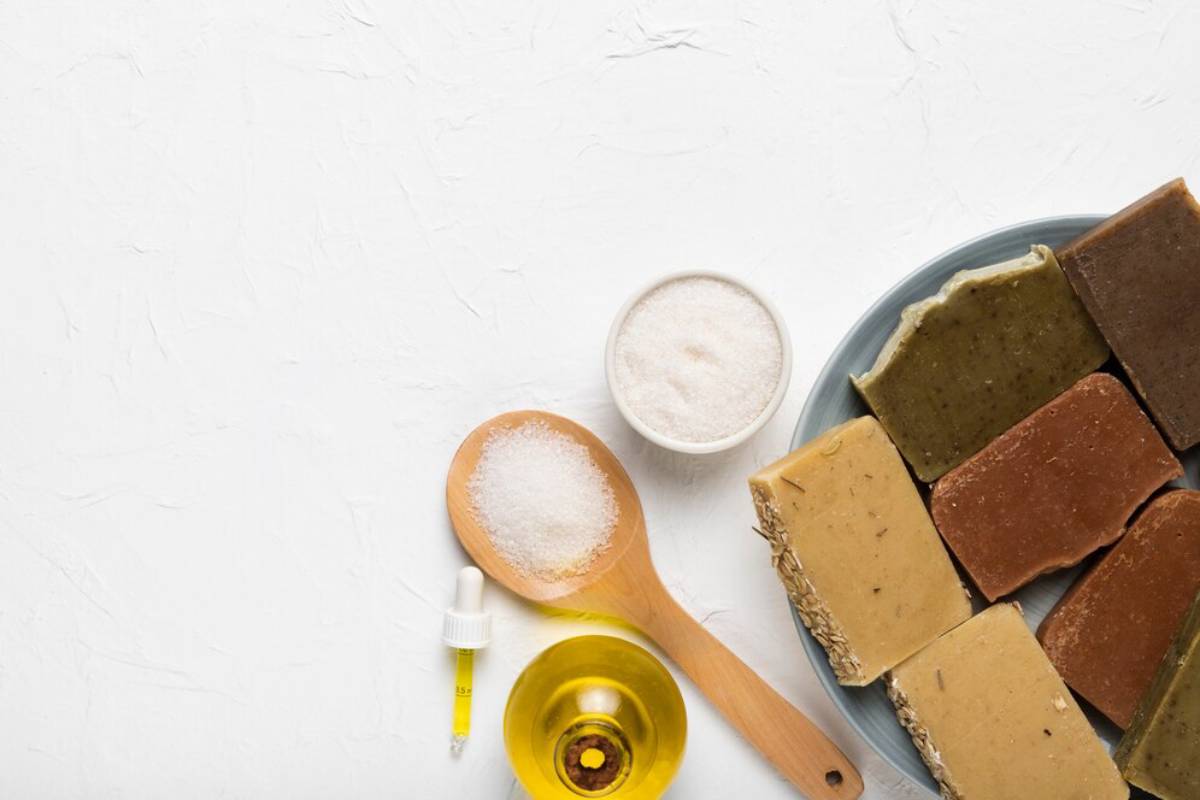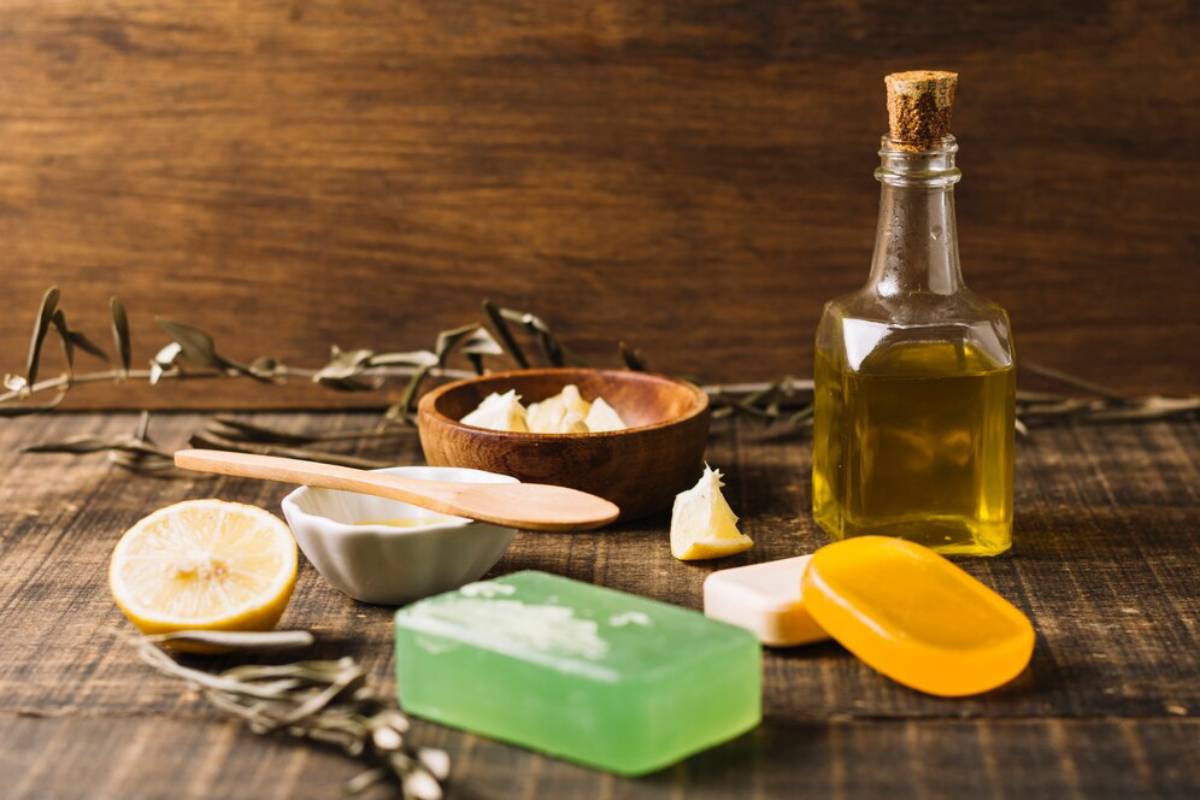
Handmade Soaps: Natural Ingredients for Beginners
It also is becoming popular, so I make homemade soap. Consumers want green, sustainable living and personalised products free of chemicals. Handmade soap making is an exciting and profitable small business opportunity for beginners. DIY soap-making has charm because you can create unique products without knowing what goes into your products. In this blog, I will take you through the basics of making soap by hand, focusing on natural ingredients that are ideal for beginners.
Soap-making might sound complicated, but it’s a skill you can learn with patience. Many newcomers worry about working with lye or the effectiveness of natural ingredients. But with the proper guidance, these concerns can be quickly addressed. This introduction will clarify the process and provide the foundational knowledge to start your soap-making journey.
Key Benefits of Handmade Soaps
Why It Matters
Handmade soaps offer benefits beyond just crafting. You can control the ingredients in your soaps. Unlike commercial products with synthetic additives and harsh chemicals, handmade soaps can be tailored to your skin type and preferences. Using natural ingredients ensures your skincare routine is free from harmful substances.
Natural ingredients have many skin benefits. For example, oils like olive and coconut are known for their moisturising properties. Essential oils offer therapeutic benefits, ranging from calming lavender to invigorating peppermint. Natural colourants and exfoliants, like clays and oatmeal, add beauty and function to your soaps. These ingredients support your skin’s balance, promoting healthy and hydrated skin.
Another benefit is the creative freedom handmade soaps provide. Using various moulds and additives, you can design unique shapes, textures, and layers. This personalisation is great for personal use or thoughtful gifts. A soothing lavender bar for a relaxing bath with lighted candles or an invigorating citrus blend for morning showers adds a personal touch that store-bought options often lack.
Handmade soaps are also eco-friendly. By choosing natural ingredients and avoiding plastic packaging, you help reduce your carbon footprint. This sustainable approach benefits the planet and meets the demand for eco-conscious products. Supporting local suppliers for your ingredients and packaging can further lessen your impact and promote community sustainability.
Additional Expert Tips & Common Mistakes to Avoid
Best Practices for Beginners
Start with a simple recipe. A basic cold-process soap recipe, combining oils, lye, and water, is a great starting point. As you gain confidence, experiment with different natural ingredients for varied textures, scents, and colours. Use predictable oils, like olive, coconut, and palm oil, and avoid complex formulations until you gain experience.
When choosing oils, consider their properties. Olive oil is excellent for a gentle, moisturising bar, while coconut oil creates a rich lather. Castor oil boosts bubbles, and shea butter adds a creamy texture. Balancing these oils is key for a well-rounded soap. A good recipe mixes hard and soft oils for durability and a pleasing lather.
Measuring ingredients accurately is crucial. Soap making is a science, so precise measurements ensure chemical reactions happen correctly. A digital scale is highly recommended. Using a soap calculator helps formulate your recipe and determine the right lye and water amounts, ensuring your soap is safe and effective.
Temperature control is also important. Before mixing, both the lye solution and oils should be around 100-120°F. This helps with emulsification and trace, the point when your soap batter thickens and is ready to pour into moulds.
Common Mistakes and Their Impact
A common mistake is not allowing the soap to cure correctly. Curing evaporates excess water, resulting in a more rigid, longer-lasting bar. Skipping this step can lead to soft, mushy soap that dissolves quickly. Most cold process soaps need at least 4-6 weeks of curing in a cool, dry area with good air circulation.
Another standard error is using too much fragrance or essential oil. While it’s tempting to create strongly scented soap, too much can irritate the skin or cause the soap to seize. Always follow the recommended usage rates from suppliers. Remember, essential oils are potent and should be handled carefully.
Beginners may rush mixing or pour the soap into moulds too early or late. Achieving the right trace ensures your ingredients and soap sets mix well appropriately. Undermixing can cause separation while overmixing can make the soap too thick to pour.
Lastly, not using safety gear when handling lye can lead to injuries. Always wear gloves, goggles, and long sleeves when working with lye. Ensure your workspace is well-ventilated. Store the lye safely and label it clearly to prevent accidents.
Advanced Insights / Expert Recommendations
Exploring Natural Ingredients

As you gain comfort with the basics, explore a broader range of natural ingredients to enhance your soap-making. Ingredients like shea butter and cocoa butter add moisturising properties, while activated charcoal can detoxify. These ingredients cater to specific skincare needs and improve your soap’s quality.
Experimenting with botanicals like dried flowers and herbs adds visual appeal and natural scents. Calendula petals are soothing, making them great for sensitive skin. Lavender buds, rose petals, and chamomile can also work well. Test how these botanicals react in your recipe; some may discolour or cause spotting.
To add natural colour, try clays or plant-based powders. French green clay or spirulina powder creates beautiful greens, while turmeric or paprika adds warm tones. Beetroot powder offers natural pinks, and cocoa powder produces rich browns. Remember that natural colourants can act differently once saponified, so test in small batches.
Infusing your oils with herbs before soap making can enhance both the properties and look of your final product. Oil infusions with calendula or chamomile are popular and easy to make—just steep dried herbs in carrier oil for several weeks.
Tailoring Soaps to Skin Types
As you gain experience, you can tailor soaps for specific skin types. For dry skin, use olive oil and rich butter like shea or mango. Activated charcoal, tea tree oil, and bentonite clay can help remove impurities and reduce inflammation for oily or acne-prone skin.
Mature or sensitive skin may benefit from gentle oils like almond or jojoba, with soothing essential oils like chamomile or lavender. Add finely ground oats or poppy seeds for exfoliation to slough off dead skin cells and improve circulation.
Creating themed soap collections—like a “spa day” series or seasonal scents—can be fun, as can organising your recipes and sharing your creations.
Embrace the Craft of Natural Soap Making

Making handmade soaps is creative and rewarding, and it is the beginning of this journey. Using natural ingredients means that you are enjoying products that are kind to your skin and the planet. As long as you know your craft, there are infinite possibilities for customisation and creativity.
Start with a simple recipe and slowly introduce the many natural elements. Soap-making takes time and practice, so master these techniques! You will learn, experience, and innovate while creating personalised soaps closely related to your interests and beliefs. You can also make candles and decorate them for a new hobby.
Are you ready to dive into handmade soaps? Gather ingredients, set up your workspace, and let the soap-making adventure begin!